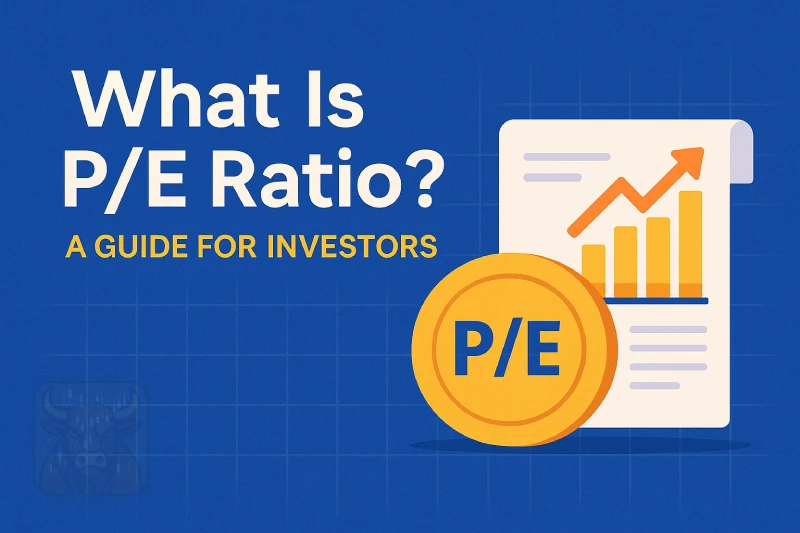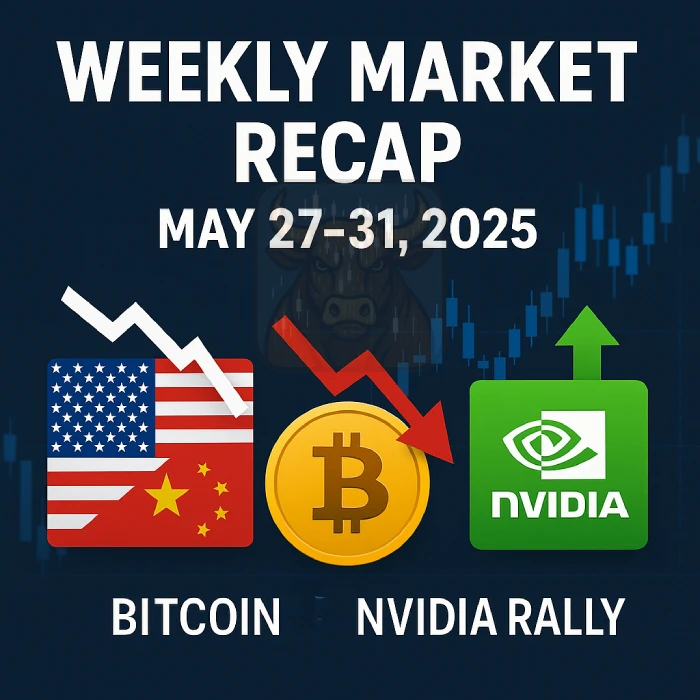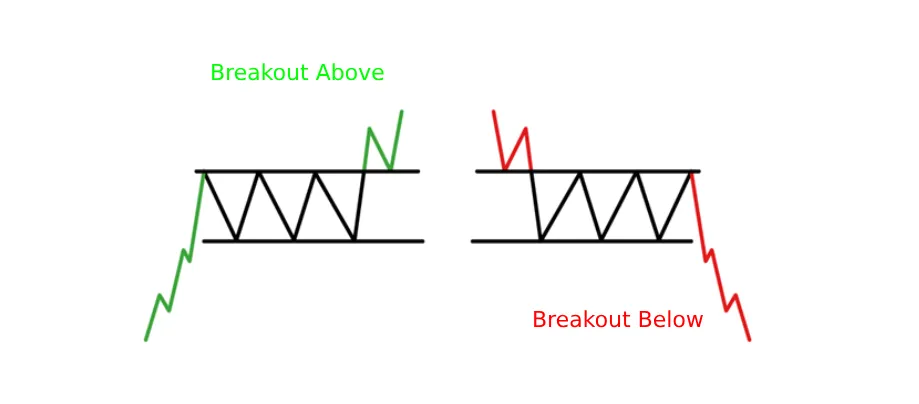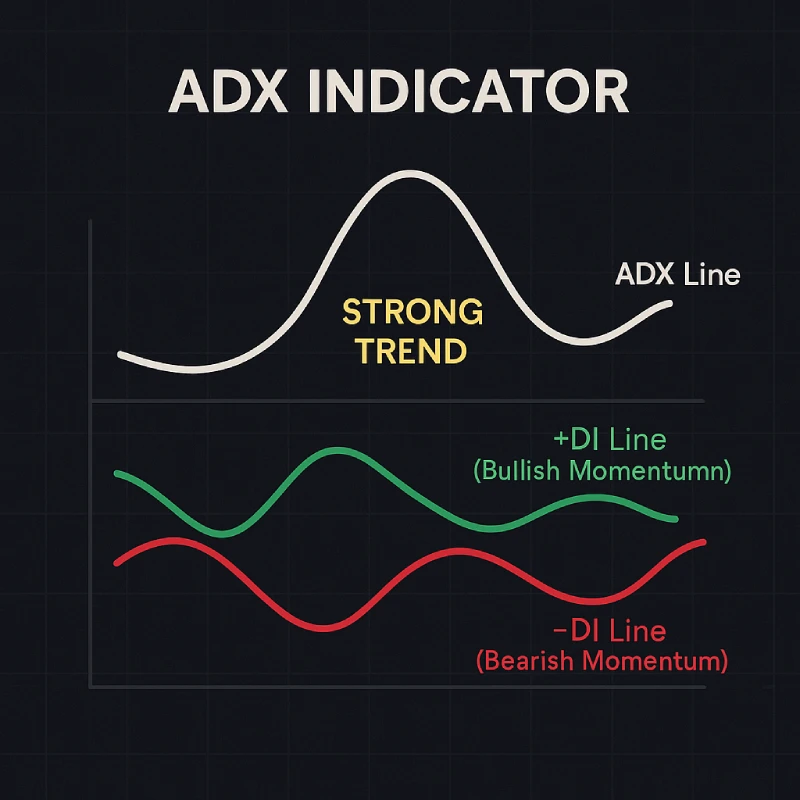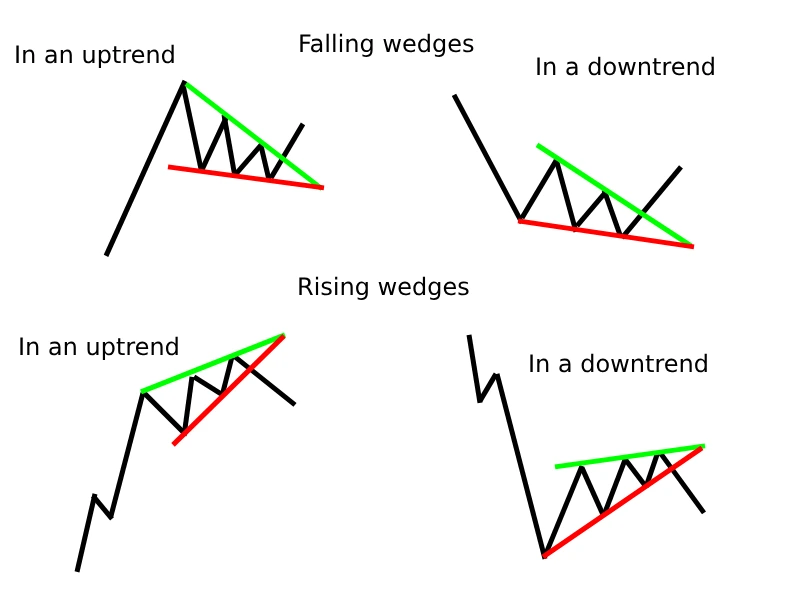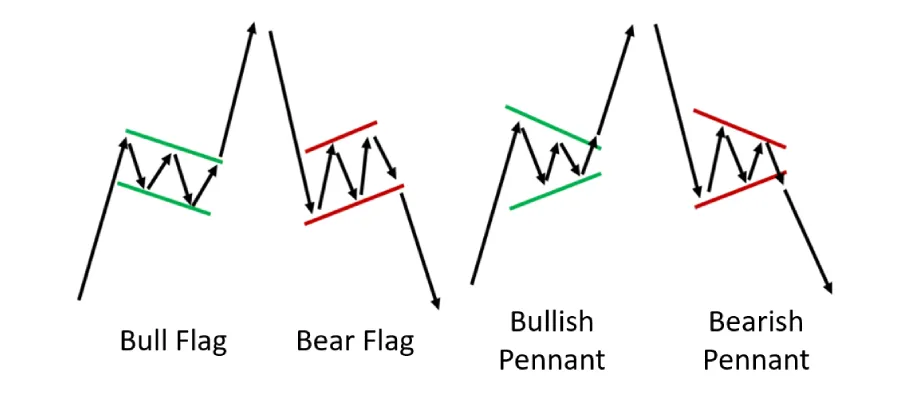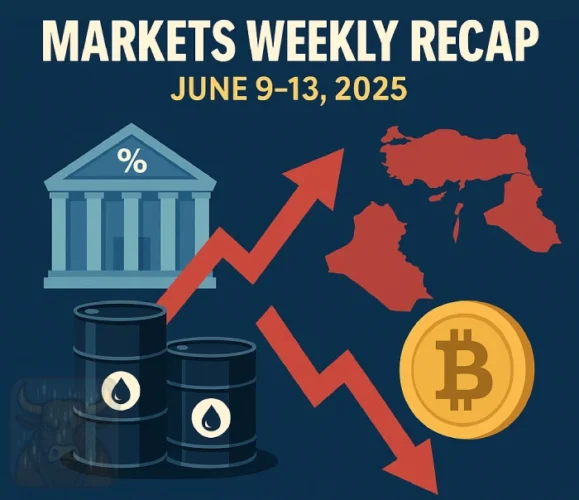
📊 Weekly Market Performance (June 9–13, 2025)
| Index | Close (June 13) | Weekly Change |
|---|---|---|
| S&P 500 | 5,977 | ▼ -23 pts (from 6,000) |
| Dow Jones | 42,192 | ▼ -566 pts (from 42,758) |
| Nasdaq | 21,631 | ▼ -130 pts (from 21,761) |
🗓️ Monday, June 9, 2025
📍 Markets Hold Steady as U.S.–China Trade Talks Begin in London
Monday’s financial landscape was shaped by optimism surrounding the kickoff of high-level trade negotiations between the United States and China. Investors around the globe monitored developments closely, as they could significantly impact tariffs, supply chains, and inflationary trends.
🇺🇸 U.S. Highlights
🔹 1. U.S.–China Trade Talks Open in London
A key round of trade negotiations began in London, with top U.S. officials—Treasury Secretary Scott Bessent, Commerce Secretary Howard Lutnick, and Trade Representative Jamieson Greer—meeting with their Chinese counterparts. Topics included semiconductor exports, critical minerals, and existing tariffs. Market sentiment turned cautiously optimistic, lifting futures and fueling hope for progress.
🔹 2. Wall Street Posts Modest Gains
US markets ended slightly higher. The S&P 500 rose 0.1% to 6,005.9, the Nasdaq gained 0.3%, while the Dow remained flat. These moves reflected investor optimism over the trade talks and lingering momentum from the strong jobs report released last week.
🔹 3. U.S. Dollar Softens Amid Trade Optimism
The U.S. Dollar Index (DXY) slipped as investors reduced their bets on further rate hikes and priced in the possibility of a trade breakthrough. A weaker dollar also helped commodities edge higher.
🔹 4. NY Fed Survey: Lower Inflation Expectations
Consumer inflation expectations declined across all horizons (1, 3, and 5 years), according to the New York Fed. While this is encouraging for the Fed’s 2% inflation target, expectations remain slightly above desired levels.
🌍 Global Market Developments
🔹 5. European Markets Flat Amid Trade Uncertainty
The STOXX 600 finished the day nearly unchanged, as investors kept a close eye on the U.S.–China discussions. The muted session reflected caution rather than confidence.
🔹 6. Yen Strengthens on Japan GDP Beat
Japan’s economy slightly exceeded Q1 growth expectations, giving the yen a boost. It traded at around 144.4 per dollar, regaining strength after recent weakness.
🔹 7. Oil Prices Reach Multi-Week Highs
Crude prices emerged to recent highs (Brent at $67.04 and WTI at $65.29) supported by a weaker dollar and anticipation of smoother global trade following talks in London.
🧾Monday set a cautiously optimistic tone for the week. With trade negotiations underway, investors saw room for improvement in global trade conditions, even as inflation remained underdue. While U.S. Markets gained modestly, global capital flows suggest lingering skepticism over long-term domestic stability. All eyes remain on how negotiations progress and whether real breakthroughs will follow.
🗓️ Tuesday, June 10, 2025
📍 Markets Rally as Trade Optimism and Oil Prices Climb
Global markets remained buoyant on Tuesday as hopes for progress in U.S.–China trade talks continued to lift investor sentiment. Key U.S. indices rose, oil prices approached multi-week highs, and central banks signaled cautious policy outlooks amid global uncertainty.
🇺🇸 U.S. Highlights
🔹 1. Wall Street Extends Gains on Trade Optimism
The S&P 500 and Nasdaq each gained around 0.6%, while the Dow rose 0.3%, as confidence grew in the ongoing trade talks between the U.S. and China in London. The potential for tariff relief and improved supply chain conditions lifted risk appetite across sectors.
🔹 2. Oil Prices Hold Near 7-Week Highs
Crude oil prices stayed near their highest levels in seven weeks. Brent traded at $66.87 and WTI at $64.98, supported by a weakening dollar and investor hopes for a smoother global trade environment.
🔹 3. Fed Likely to Hold Rates Until September
A new Reuters poll of economists suggests that the Federal Reserve will likely maintain interest rates steady until at least September 2025. While rate cuts could come later in the year, concerns over inflation tied to tariffs may delay policy easing into 2026.
🌍 Developed Markets Outlook
🔹 4. Eurozone Investor Sentiment Improves Slightly
The Sentix Investor Confidence Index rose to 0.2 in June, its highest reading in a year—signaling cautious optimism across Europe. The improvement was largely driven by hopes of easing U.S. tariffs, although the index remains below the positive sentiment threshold.
🔹 5. U.K. Headed Toward Gradual Rate Cuts
The Bank of England is expected to begin slowly cutting interest rates this year, according to a Reuters survey. With the U.K. economy projected to grow just 1% in 2025, policymakers are leaning toward a gradual easing strategy.
🧾 Tuesday reinforced the market’s upward momentum as confidence in U.S.–China trade negotiations persisted. While oil prices surged and Wall Street climbed, monetary policy remained in focus. The Fed is expected to stay on hold, and central banks abroad are preparing for rate cuts. Altogether, markets are navigating cautiously between optimism over trade and concerns about inflation and growth.
🗓️ Wednesday, June 11, 2025
📍 Markets Waver as U.S.–China Trade Deal Hits a Bump; Inflation Eases in May
Global financial markets showed signs of hesitation on Wednesday as optimism around U.S.–China trade negotiations gave way to caution. A framework deal was reached, but final approval remains pending. Meanwhile, inflation in the U.S. surprised to the downside, and geopolitical tensions drove oil and safe-haven assets higher.
🇺🇸 U.S. Highlights
🔹 1. Trade Deal Uncertainty Dampens Market Sentiment
Markets opened cautiously after U.S.–China trade talks yielded only a tentative framework agreement. Investors remained wary as key details and presidential approval were still lacking. This lack of clarity led to a pause in recent market momentum.
🔹 2. U.S. Inflation Cooled in May
Consumer prices rose just 0.1% in May, with year-over-year inflation at 2.4%—below forecasts. Falling prices in gasoline and used vehicles contributed to the subdued reading. However, analysts warn that future tariff increases could reverse this trend.
🔹 3. Oil and Safe-Haven Assets Surge Amid Middle East Tensions
Oil prices jumped nearly 4% on rising tensions in the Middle East. The geopolitical risk premium also fueled demand for safe-haven assets, including gold, the Japanese yen, and the Swiss franc.
🌍 Developed Economies
🔹 4. Japan Warns of Tariff Risks, Delays Rate Hike Outlook
Japan’s government expressed concern that new U.S. tariffs could squeeze corporate profits and weaken domestic consumption. While Q1 GDP showed modest recovery, a Reuters poll indicated that the Bank of Japan may postpone its next rate hike until Q1 2026.
🔹 5. Eurozone Investor Confidence Rebounds Sharply
The Sentix index for the eurozone climbed to 0.2 in June, up from -8.1 in May—its highest level in over a year. German sentiment also improved to -5.9, reflecting growing investor optimism as trade tensions show signs of easing.
🧾 Wednesday’s trading session highlighted the fragility of market optimism. While inflation data offered some relief, the unresolved nature of the U.S.–China deal kept markets on edge. Rising oil prices and central banks signaling caution reinforced the sense that global uncertainty remains a key driver of investor behavior.
🗓️ Thursday, June 12, 2025
📍 Markets Volatile as Iran Conflict Escalates; U.S. Recession Odds Lowered
Thursday’s session was marked by geopolitical tension and mixed economic signals. An Israeli strike on Iran rattled global markets, while fresh U.S. data and forecasts reduced recession fears. Meanwhile, the dollar slumped, IPO activity surged, and the Fed inched closer to potential rate cuts.
🇺🇸 U.S. Highlights
🔹 1. Goldman Sachs Cuts Recession Odds
Goldman Sachs reduced the probability of a U.S. recession within the next 12 months from 35% to 30%, citing easing U.S.–China tensions, a more stable political outlook, and upgraded GDP growth forecasts of 1.25% quarterly for 2025.
🔹 2. Fed Payment Policy Faces Political Pushback
Senator Ted Cruz proposed ending the Fed’s authority to pay interest on bank reserves, arguing the change could save over $1 trillion. Economists warned such a move could disrupt monetary policy and destabilize short-term lending markets.
🔹 3. Wall Street Rebounds Despite Trade Fears
The Dow rose 0.2%, with the S&P 500 and Nasdaq up 0.4% and 0.2%, respectively, recovering from earlier losses. Investor sentiment remained fragile amid new tariff threats from former President Trump.
🔹 4. U.S. Dollar Falls to Two-Year Low
The U.S. dollar index dropped to its lowest level since April 2022, pressured by soft inflation data. This boosted demand for other major currencies, including the euro, yen, and Swiss franc.
🌍 Developed Economies
🔹 5. Germany Returns to Growth
Germany is on track to emerge from recession, with economic institutes (IfW, Ifo, RWI, IWH) raising 2025 growth forecasts to 0.3%–0.4%. Industrial orders and consumer sentiment have improved modestly.
🔹 6. ECB Says Policy Is “Well Positioned”
ECB executive Isabel Schnabel stated that current monetary policy is appropriately calibrated, with inflation expected to return to target over the medium term. A stronger euro supports the outlook.
🇪🇺 Keywords: ECB monetary policy, eurozone inflation, Isabel Schnabel, euro strength
🔹 7. U.K. Economy Hit by Tariffs
Britain’s economy contracted in Q2 amid mounting pressure from U.S. tariffs and domestic policy uncertainty. The pound weakened sharply against the euro.
🔹 8. G7 Moves to Cut Russian Oil Price Cap
G7 nations (excluding the U.S.) agreed to lower the Russian oil price cap to $45 per barrel, aiming to reduce Moscow’s war funding. This adds further pressure to global energy markets.
🌎 Global & Financial Markets
🔹 9. U.S. IPO Market Regains Momentum
U.S. IPOs have raised $25.4 billion so far in 2025, surpassing last year’s total. Major players like Chime, Klarna, and Cerebras are leading the resurgence in new listings.
🔹 10. Fed Rate Cuts Back on the Table
Recent data—including a softer PPI and rising jobless claims—reinforced expectations that the Fed may begin cutting rates in September, marking a potential policy shift.
🚨 Geopolitical Flashpoint
🇮🇱 Israel Launches Strike on Iran
Israel launched a drone and missile attack on military and nuclear sites in Iran, reportedly targeting high-ranking officials.
- The U.S. distanced itself but moved to high alert.
- Oil prices spiked sharply.
- Stocks slid while gold, the yen, and the Swiss franc surged.
The escalation deepens instability in the Middle East and threatens global energy supply chains.
🧾Markets are now navigating a volatile mix of improving U.S. economic fundamentals and escalating geopolitical risk. While Wall Street remains buoyed by lower inflation and recession fears fading, the Iran crisis introduces fresh uncertainty. Investors are watching the Fed, oil markets, and global diplomacy closely.
🗓️ Friday, June 13, 2025
📍 Wall Street Slumps as Oil Surges; Fed Stays Patient Despite Geopolitical Shock
Markets closed the week under heavy pressure as the Israel–Iran conflict escalated, sending oil prices soaring and shaking investor confidence. Despite the turmoil, the Fed appears set to hold rates steady, while consumer sentiment posted a surprise rebound.
🇺🇸 U.S. Highlights
🔹 1. Wall Street Tumbles Amid Rising Oil Prices
U.S. stocks fell sharply following Israel’s military strikes on Iran, which drove oil prices up nearly 7%.
Energy stocks like Exxon Mobil rose ~1.7%, while airline shares (Delta, United, American) plunged between –3.7% and –4.7% due to rising jet fuel costs. Defense contractors such as Lockheed Martin, RTX, and Northrop Grumman gained up to 3.2%.
🔹 2. Market Sentiment Shaky but Gold and Dollar Strengthen
Despite volatility, the S&P 500 ended the week nearly flat overall. Investors sought safe havens like gold and the U.S. dollar amid protests and rising global tensions.
🔹 3. Fed Likely to Hold Rates Despite Energy Shock
The Federal Reserve signaled it would likely keep rates unchanged in its upcoming meeting, citing tame inflation and persistent uncertainty around trade and fiscal dynamics—even as oil prices spiked.
🔹 4. Consumer Confidence Rebounds
The University of Michigan’s consumer sentiment index jumped from 52.2 to 60.5, its first meaningful increase in six months. The improvement reflects easing inflation pressures and a pause in tariff escalations
🌍 Developed Economies
🔹 5. European Markets Follow U.S. Downturn
The STOXX 600 index dropped 0.9%, mirroring Wall Street’s decline. Investors across Europe also flocked to safe-haven assets amid escalating Middle East tensions.
🔹 6. Swiss–EU Economic Pact Gains Support
Switzerland approved a key agreement to deepen economic cooperation with the European Union. The deal aims to secure long-term trade stability amid a volatile geopolitical backdrop.
🧾Friday capped a turbulent week for global markets. While rising oil prices and Middle East conflict rattled investors, the Fed’s steady hand and a rebound in U.S. consumer sentiment offered a measure of calm. With inflation pressures muted for now, monetary policy looks set to remain on hold, even as geopolitics reshape investor strategies.
🧭 Weekly Market Wrap-Up: Tension Trumps Optimism
Markets began the week with cautious optimism, supported by soft inflation data in the U.S., resilient consumer sentiment, and rising hopes of a Fed rate cut in September. Equities, crypto assets, and bond markets all reflected this improved outlook—until geopolitical risk surged.
The Israel–Iran conflict dramatically shifted sentiment on Thursday and Friday. Oil prices spiked nearly 7%, safe-haven assets like gold and the dollar strengthened, and major equity indices closed the week in the red. Crypto markets were hit even harder, with Bitcoin and Ether suffering significant losses.
Meanwhile, the IPO window reopened, with Circle leading the charge and other firms like Gemini preparing to follow suit, marking a return of crypto public listings. Regulatory momentum also picked up: the U.S. moved closer to pro-crypto legislation, and the EU advanced MiCA licensing across the bloc.
Though economic fundamentals in the U.S. and Europe remain relatively solid, this week was a reminder that geopolitical risks can swiftly override macroeconomic narratives. Volatility is back—and with it, new opportunities and risks for investors across all asset classes.
👋 Thanks for Reading!
If you found this weekly update helpful, follow us for more concise, data-driven insights on markets, economics, and crypto. Stay informed. Stay prepared.
Until next week, trade smart and think long-term.

